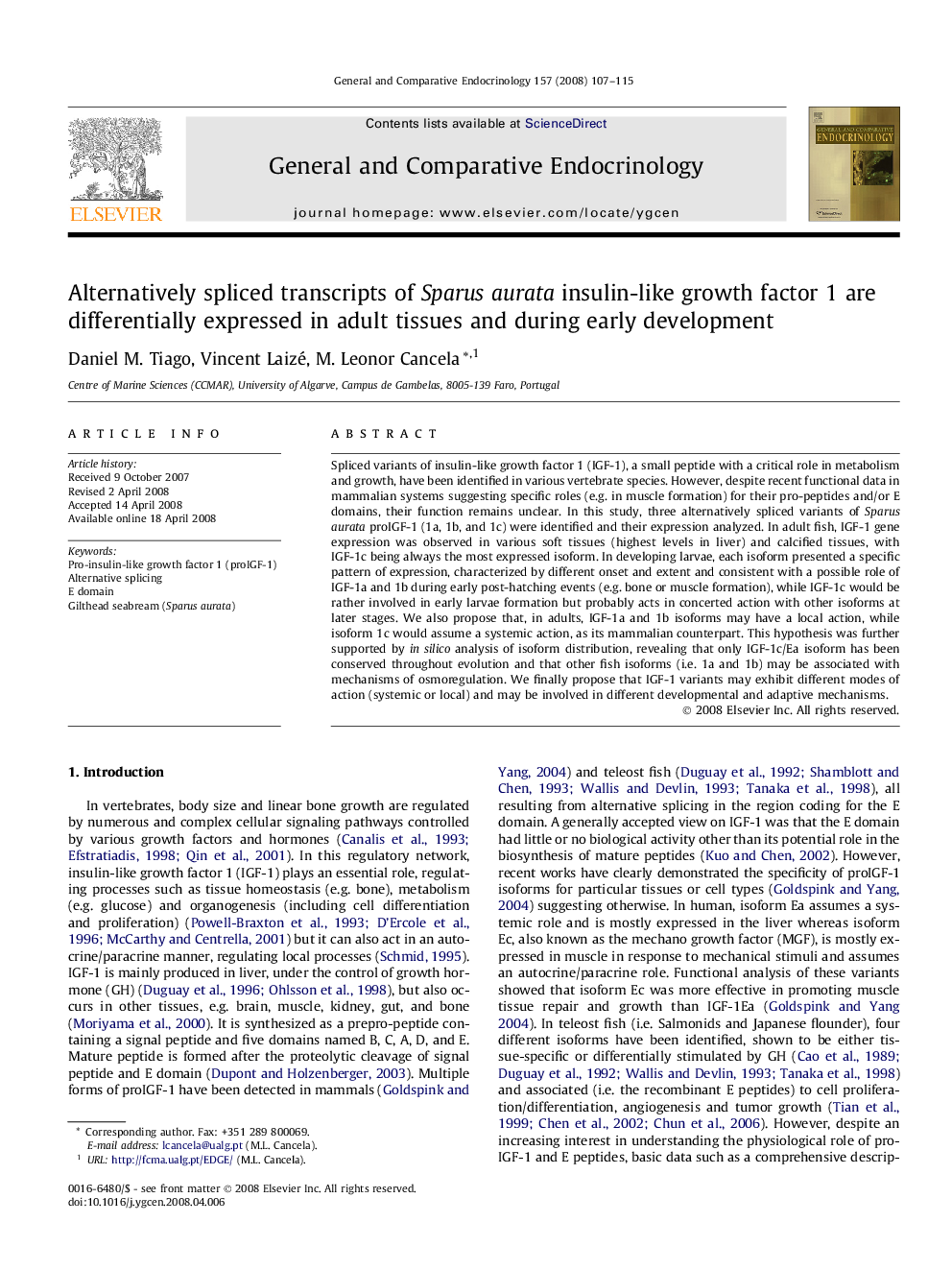| Article ID | Journal | Published Year | Pages | File Type |
|---|---|---|---|---|
| 2801731 | General and Comparative Endocrinology | 2008 | 9 Pages |
Spliced variants of insulin-like growth factor 1 (IGF-1), a small peptide with a critical role in metabolism and growth, have been identified in various vertebrate species. However, despite recent functional data in mammalian systems suggesting specific roles (e.g. in muscle formation) for their pro-peptides and/or E domains, their function remains unclear. In this study, three alternatively spliced variants of Sparus aurata proIGF-1 (1a, 1b, and 1c) were identified and their expression analyzed. In adult fish, IGF-1 gene expression was observed in various soft tissues (highest levels in liver) and calcified tissues, with IGF-1c being always the most expressed isoform. In developing larvae, each isoform presented a specific pattern of expression, characterized by different onset and extent and consistent with a possible role of IGF-1a and 1b during early post-hatching events (e.g. bone or muscle formation), while IGF-1c would be rather involved in early larvae formation but probably acts in concerted action with other isoforms at later stages. We also propose that, in adults, IGF-1a and 1b isoforms may have a local action, while isoform 1c would assume a systemic action, as its mammalian counterpart. This hypothesis was further supported by in silico analysis of isoform distribution, revealing that only IGF-1c/Ea isoform has been conserved throughout evolution and that other fish isoforms (i.e. 1a and 1b) may be associated with mechanisms of osmoregulation. We finally propose that IGF-1 variants may exhibit different modes of action (systemic or local) and may be involved in different developmental and adaptive mechanisms.
